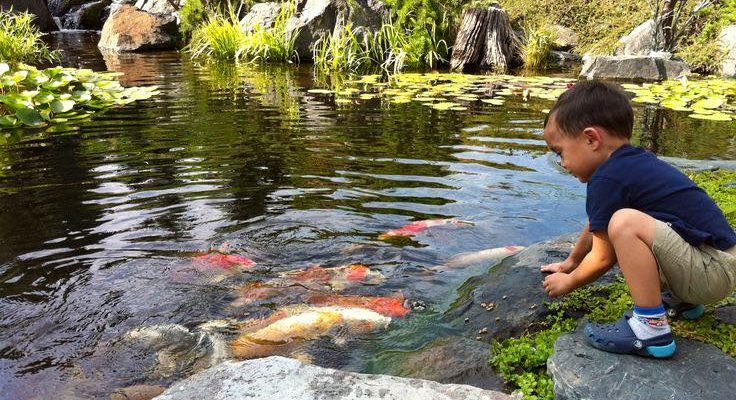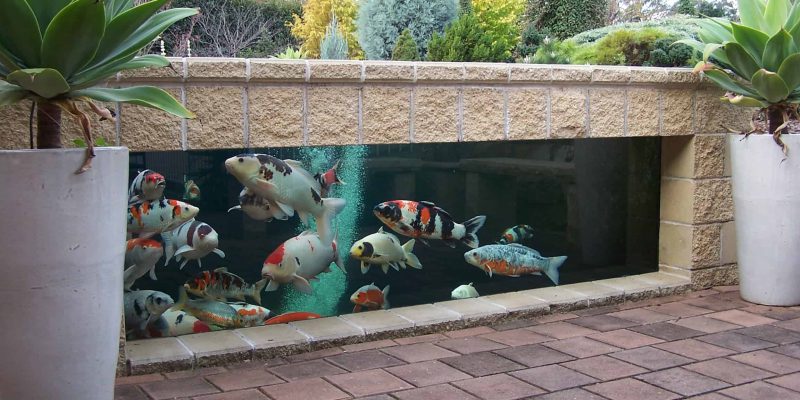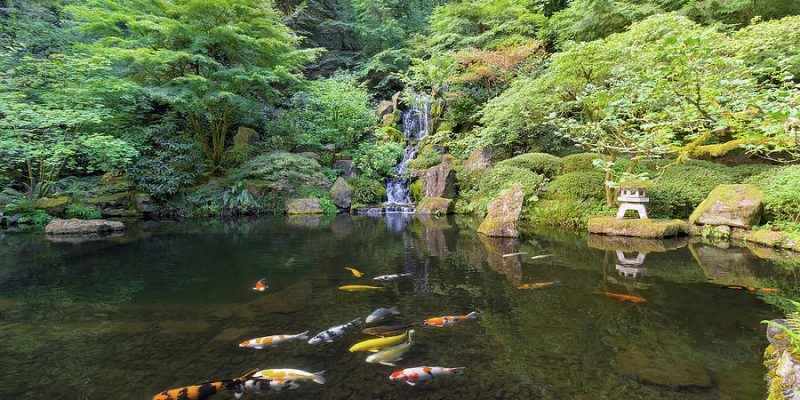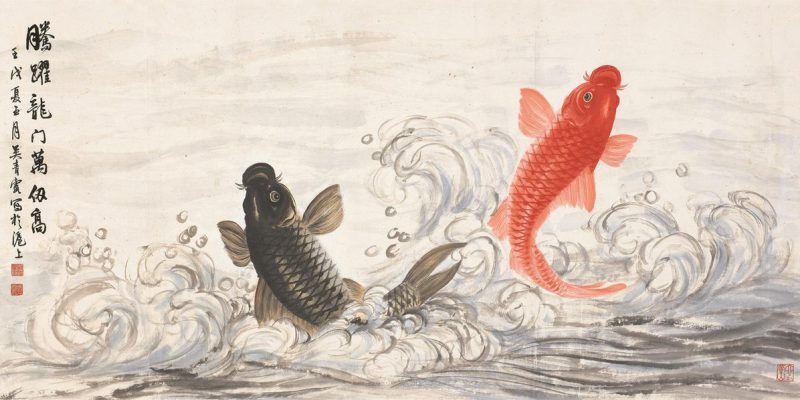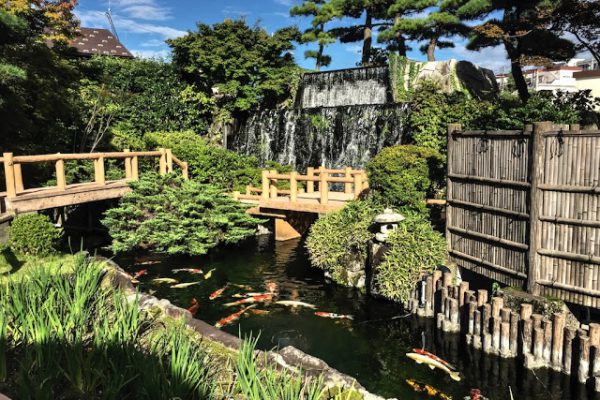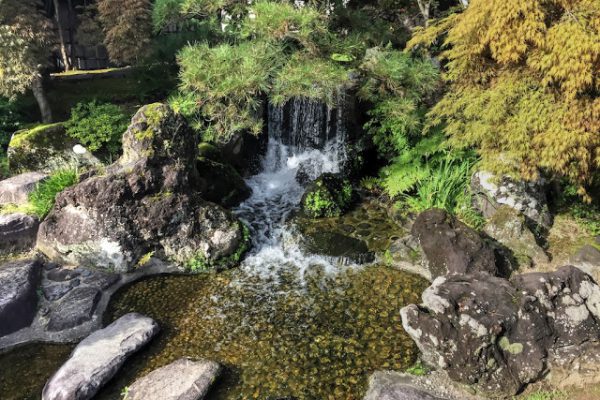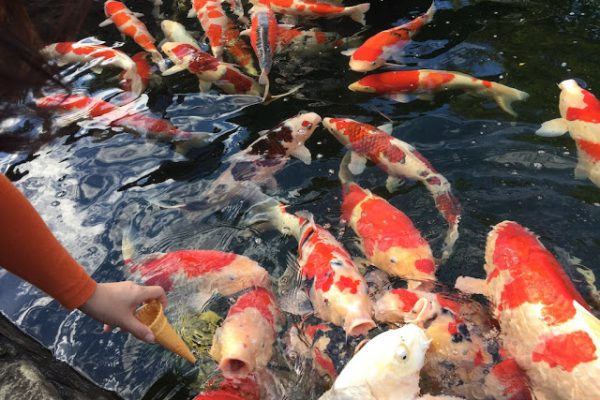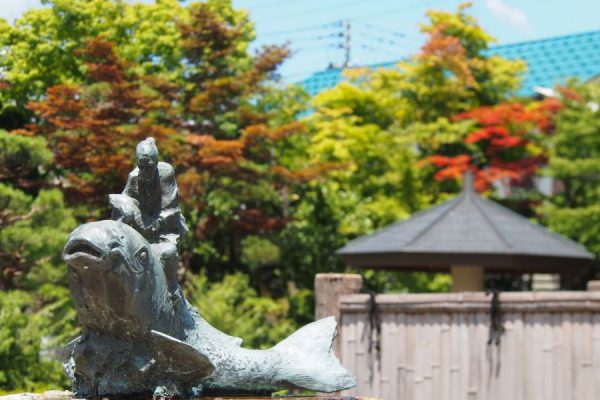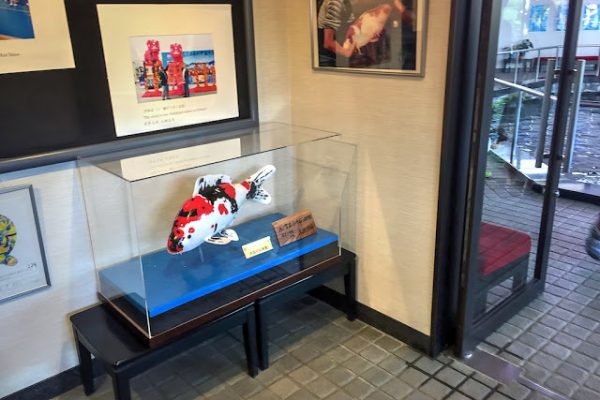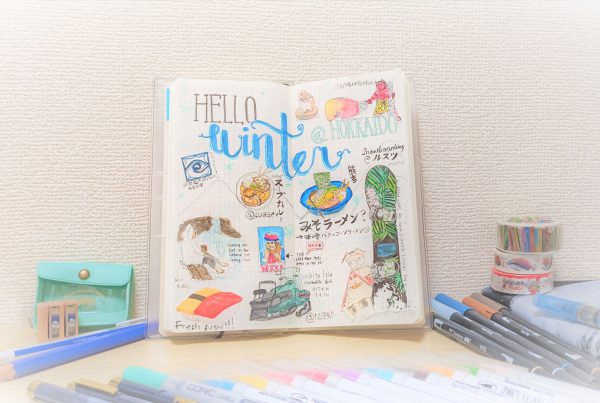Known throughout Japan for its high-quality sake, senbei, rice, mochi, and arare, Niigata Prefecture is also the origin of the ornamental carp known as Nishikigoi or Koi.
Closely associated with the country’s national identity, the Koi fish symbolizes luck, prosperity, and good fortune in Japan.
The meaning of Nishikigoi
The Nishikigoi name was a term first used almost 200 years ago, during the Edo period, but at the time, they were called “Irogoi,” “Hanagoi,” “Moyogoi, “and “Kawarigoi.”
There are different legends about why the carp was named Nishikigoi or Koi fish. According to one of the legends, around 1940, the name “Nishikigoi” became the household word in Japan after a Koi show in Takesawa Village (a part of Yamakoshi Village). Mr. Kei Abe, the chief officer from the Niigata prefectural government fisheries being struck by the overwhelming beauty of a Taisho Sanshoku (Sanke), called them a true Nishikigoi.
Historically, in Japanese, ”Nishiki” is a silk fabric woven with gold. The word “Nishiki” is used to describe beautiful and elegant things, and Nishikigoi certainly is a sleek carp like silk that deserves that name.
Today, Nishikigoi from Niigata is no longer beloved only by the Japanese as the epitome of Japanese aesthetics but has become a representative of ornamental fish worldwide for its beauty and precious value.

Nishikigoi is said to have originated in the district of former Yamakoshi Village(red in left figure), (current Nagaoka City-green in left figure) and Ojiya City (yellow in left figure) in Niigata Prefecture via INPC

Image of Yamakoshi village in Niigata prefecture via Japan
Symbolism and Spiritual Significance
Due to its high value, Koi carp has become an iconic symbol of Japanese culture and uniqueness. You could contemplate Koi carp in the waters of traditional Japanese gardens, parks of different countries, and classic paintings.
In moments of relaxation, Japanese people love to watch the graceful movements of these carps. One of the most important symbols of the Koi carp is non-conformism, and one of the biggest concerns people have when first looking into Koi is their personality.
Due to their ability to adeptly swim upstream and even up waterfalls, Koi are often associated with bravery, success, strength, and individuality. It is said that they are such independent creatures that they will do what they want regardless of the risk involved. This behavior of Japanese carp is attributed to the strong will of individuals who, in order to achieve their goals in life, will easily pass challenges to achieve what they set out to do.
Koi fish are some of the most popular pond fish. Image via Zekkeijapan
How many varieties of Ornamental Koi are there?
Japanese culture and traditional Japanese breeding methods of ornamental Koi are quite literally an art form. Indeed, the care and work put into raising healthy, stunningly vibrant koi fish in conventional breeding is impressive. Suppose you are first beginning to look into koi fish and the different sub-varieties. In that case, you may notice that although bred from the simple carp, the Nishikigoi now come in a variety of different shapes, sizes, lengths, and builds, each carrying their patterning, vibrant colors, and the specific name for their classified type.
There are over 100 varieties of carp existing within 13 classes, with more still being developed. One of the most popular is the Ghost Koi, which has beautiful metallic scales and was bred in the 1980s. Size and shape are all essentially the same no matter the Koi, but there is a nearly limitless variety of color, patterns, and scale arrangement. This includes classic color hues like white and red and more specialized fish with full metallic paint, orange, blue, greenish, pearl, spotted, or other unique patterns.
Koi take a few years to fully mature, and during that time their colors and patterns can change. According to this fact, the beauty of Koi carp is measured by looking at:
- Shape: a perfect Koi has a spindle-shaped body with its head, body and tail balanced
- Color: brightness and contrast of colors
- Pattern: the optimal design differs significantly per variety but is thought to the essential aspect of Koi appreciation


Ornamental Koi are bred for their fantastic colors, patterns, and unique shapes. Each type of koi fish variety has its specific details for identification and can be described based on another Japanese Koi type classification. Image via Pinterest
The passion and challenge for Nishikigoi
Nishikigoi, was born in Niigata and now the national fish, has become the “world’s ornamental fish,” beloved by hobbyists and pond keepers at home and overseas for not only their beauty but also their durability when given the proper conditions. There are many Koi farms in the Musikame area of Yamakoshi Village in Niigata Prefecture, each one unique in its way. A large number of koi lovers come here every year. The main idea of the koi breeders is not only to stop them while visiting but also to create a pond that will grab their attention.
Mr. Tadashi Iwashita from Iwashita Koi Farm have been breeding Koi for 55 years, but he became involved in the production of Nishikigoi after having experienced a variety of professions. Getting involved in this business he didn’t receive training from anybody because he believes that there is no textbook in the case of Nishikigoi. “It is something that one cannot learn from somebody else. In this business, you cannot succeed just by following instructions given by somebody. The experience of naturally cultivating “an eye” is more important and valuable.”
Being passionate about the Koi industry, he focuses on the production of Koi that cannot be seen at other Koi farms. He has created new varieties such as Ginrin Asahi, Ginrin Shiroutsuri, Ginrin Hajiro, Goshiki, Ochibashigure, and Ginrin Ochibashigure, Kin Kikokuryu, Hikarimoyo, and Kawarimoyo. His concept is “a complete lineup,” and currently, he produces more than eighty varieties and maintains a unique Nishikigoi approach.
Nishikigoi production is a challenging industry. It involves a lot of passion and dedication, but Mr. Iwashita is happy when Koi lovers come to his farm and appreciate different Koi fish varieties. According to him, “What is difficult is interesting”, and he intends to continue producing unique Nishikigoi.
Koi Fish Museum Garden Park: Nishikigoi no Sato
Located in Ojiya City, 20 min from Nagaoka Station, Koi Fish Museum Garden Park: Nishikigoi no Sato is the only place in the world where a wide variety of live Nishikigoi are (there are over 16 different kinds of carp). On display along with the materials showing the history of their improvements.
Though relatively small, this museum is an excellent place for family, friends, tourists, and photographers. Walking around the garden, tourists can enjoy waterfalls, bridges, bubble streams, pagodas, and, finally, the carps while feeding them.
Koi Fish Museum Garden Park: Nishikigoi no Sato in Ojiya City via Enjoyniigata
The main photo via Pinterest



